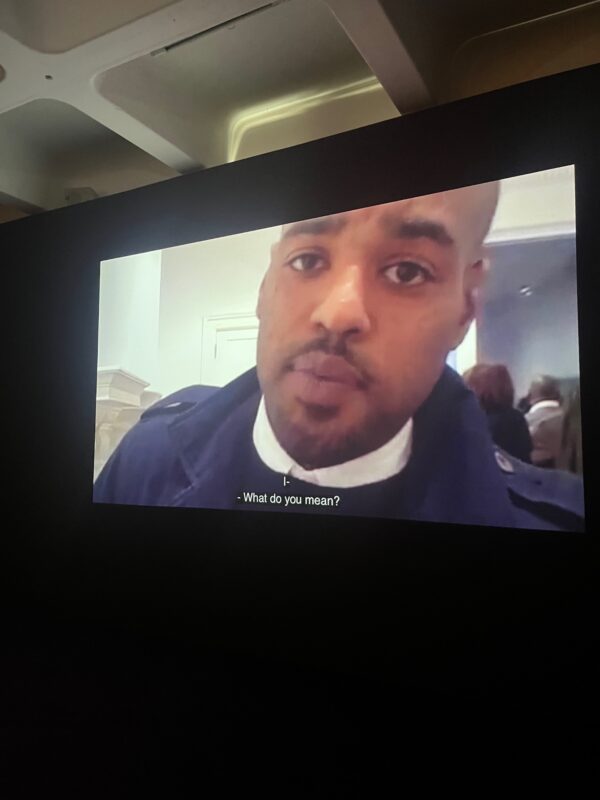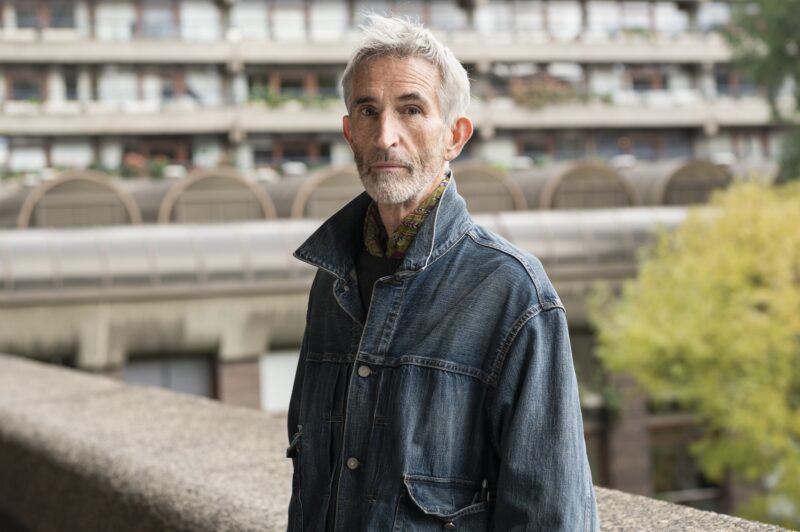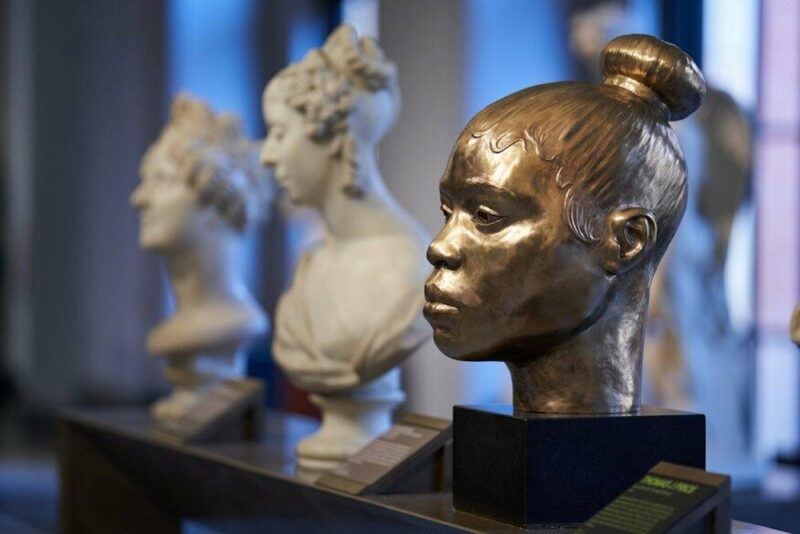“Postwar Modern” collects not only some of the most impactful artwork produced following the Second World War, but draws crucial focus to the impact that trauma can have on the subjectivity of the artist. Now showing at the Barbican until 26th June 2022, the exhibition delicately balances the distressing imagery and impact of world-changing events with a beguiling intellectual narrative.
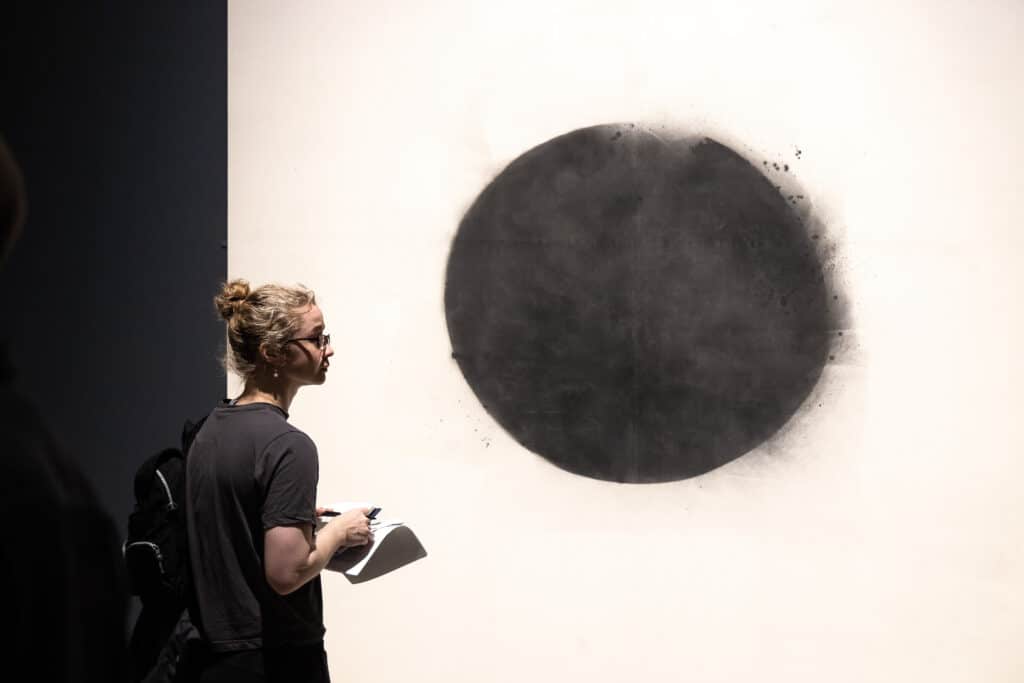
The lights are low in the gallery, hauntingly facing the walls and the art on them. Through the dense atmosphere, the exhibition’s path climbs across two floors to mimic a dialectical spiral. In a thrilling combination of emotional resonance and ideational creativity, what becomes most impressive about this show is the active curatorial philosophy behind its execution. It builds firmly upon itself, enacted as though performing a drama, and leading visitors towards a concrete vision of the works within. Once inside, the visitor is guided from the colossal and intrusive intercession of John Latham’s ‘Full Stop’ (1961) – a Lacanian traumatic interruption if ever there was one – through the dissemination of the subject into their art by Alan Davies’s ‘Creation of Eve’ (1956), and finally into confronting the thing in itself – the war, the violence, and the uneasy future that awaits. Perfect for our moment, as the UK and so many of its citizens begin to define our times as similarly ‘post-covid’, the mechanics of this story play out with an eerie resonance.

These are neatly encapsulated by another work of Latham’s, ’Man Caught Up with a Yellow Object’ (1954), where the artist’s obsession with spray painting finds theoretical impact through the painting’s form – a chaotic spread of atomised particles and pigment and a looming figure. The piece’s plaque reads of how Latham interpreted the Christian god’s act of creation – standing in for the acts of the artist – to represent not concrete objects but moments in time. A poignant Kantian portrait, this is tantamount to the announcement of the show’s intentions: that the art which follows is tied not to the artist as a unique object, but an immediate reflection of their subjectivity at one time, and in the wake of violence. Looping around the many works inside, the visitor finds the passing of time painstakingly apparent between canvases and sculpture, as they dizzyingly traverse all manners of expression. The artworks unfold from the dense packaging of earthy colours and bombastic composition in earlier images, to a settling of tones in Lucien Freud’s impressions of his surroundings in ‘Hotel Bedroom’ (1954), and finally Richard Hamilton’s pop-art visions of the future, in his poster for the ‘This is Tomorrow’ show at Whitechapel Gallery (1956). In short, it is a procession through trauma, and eventually into moving past it.
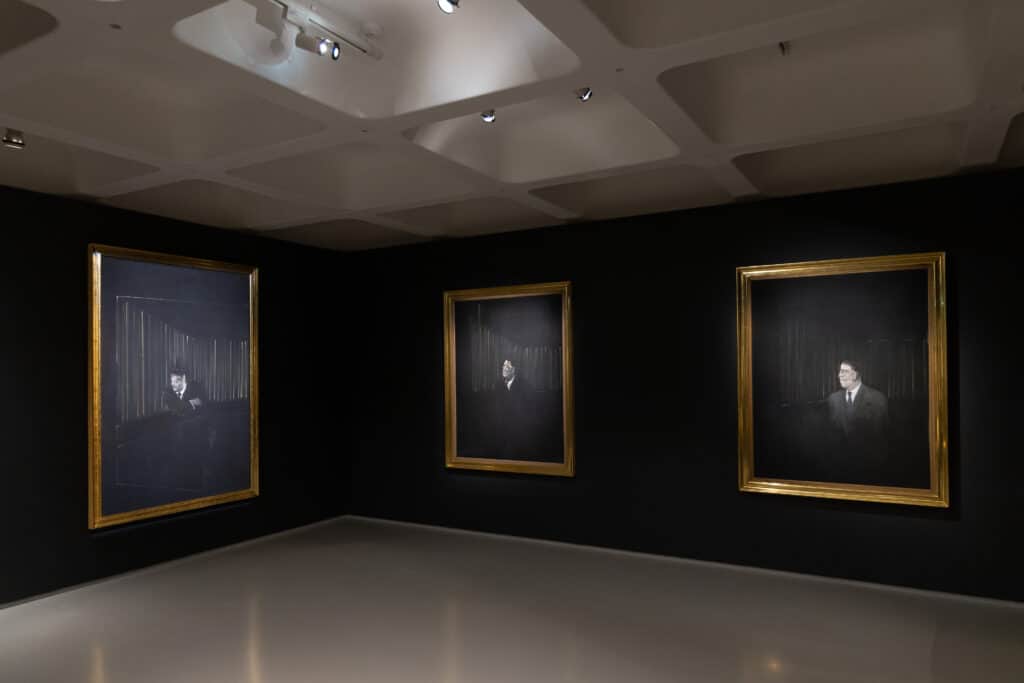
The upper floors follow much the same trajectory, though more compactly exploring divergent sets of themes as opposed to one overwhelming post-war narrative; as if unburdened with the direct influence of tragedy, the artists included could act purely of their own accord. The dark surrealism of Francis Bacon in works like ‘Man in Blue II’ (1954) may be tonally consistent with the bloody battles of the recent past, but their thematic content represents an individualistic move away from historical engagement. Similarly, the constructionist departure of abstract sculpture enters its own reality, apart from history in the ‘concrete’ themed room. Here lies the sharp absence of grimy interpretations of war, and in their place mathematical and architectural forms designed quite without human beings in mind, as if the past subjectivity had itself been experimentally abandoned, or left behind in the procession of the arts.
After leaving behind a likewise traumatic period of history, the Covid-19 pandemic of our times, the Barbican’s latest creation is most vitally a suggestion towards how we may process this interruption in our lives. By looking to the past, it vocalises through the drama of its curation how we may move beyond the mire of reflective work, beyond being trapped by the memories of violence. Once again, it becomes apparent that towards art is the direction we must take. To express, and process these events in therapeutic catharsis, and if not to create ourselves then to languish and engage with the expression of others; that by art we must always be drawn to take the next step.
